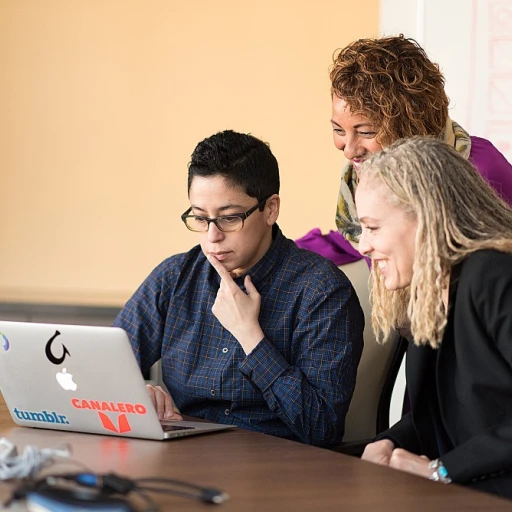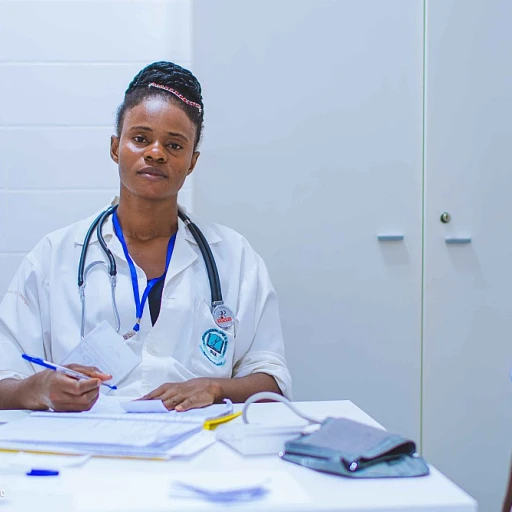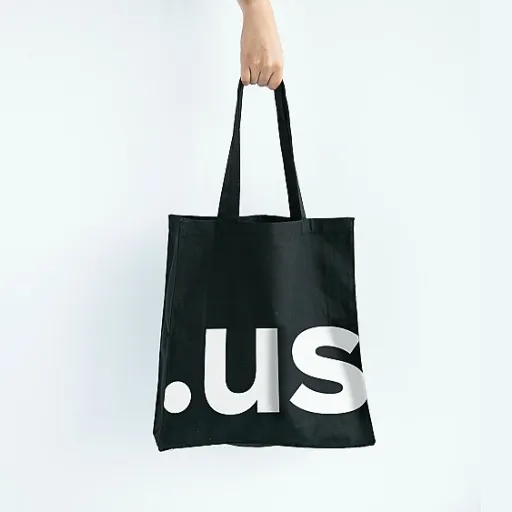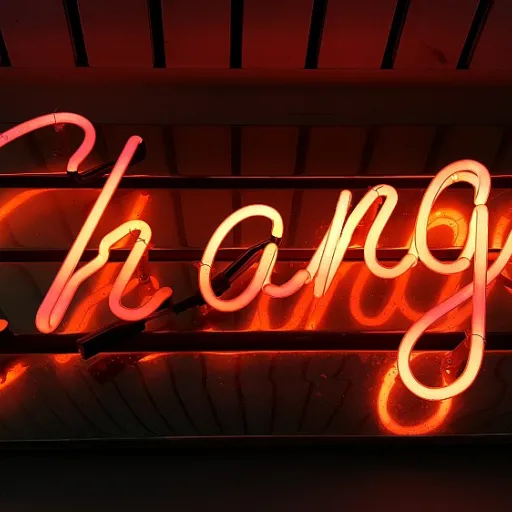Understanding the Role of a UX Developer
Defining the UX Developer Role
In the vibrant tech ecosystem of Rome, understanding the role of a UX Developer is crucial for businesses aiming to enhance their digital presence. A UX Developer, or User Experience Developer, bridges the gap between user-centered design and technical implementation. Often working closely with designers, software engineers, and product managers, their responsibility entails crafting intuitive interfaces that optimize the user's interaction with web systems and cloud software.
With growing demand for remote jobs in Italy and around the globe due to globalization and the shift towards digital solutions, the role has evolved substantially. A UX Developer is no longer just a designer but an integral part of the engineering team, collaborating with data analysts, systems engineers, and devops professionals. This multidisciplinary approach is key in creating cohesive design systems that promote seamless user interactions across various platforms.
Key Responsibilities
- Interface Design: Using a comprehensive understanding of design systems, UX Developers create user-centric interfaces that appeal to the target audience.
- Collaboration: They work alongside software engineers and designers to integrate design wireframes into front-end code.
- User Testing and Data Analysis: Conduct A/B testing and utilize data to gauge user reactions, refine designs, and contribute to software improvements, leveraging insights gathered from analyst jobs.
- Adaptability to Market Changes: Around a month ago, market insights highlighted the necessity for UX developers in Rome to adapt to emerging technologies like cloud software and machine learning, prompting a need for continuous learning and flexibility.
By thoroughly delineating these responsibilities, companies setting out to hire UX Developers in Rome will be equipped to craft detailed job descriptions and set clear expectations. This clarity not only streamlines the hiring process but also attracts top candidates in a competitive market where early applicants can make a significant difference. For more insights on hiring practices, it's worthwhile to explore how tech companies evaluate job abandonment before hiring
here.
The Current Job Market for UX Developers in Rome
Exploring the Landscape of Job Opportunities
Rome is an exciting city with a rich tapestry of history and culture, and it is also rapidly becoming a hub for technology and innovation. The job market for UX developers in Italy’s capital is evolving, as more companies recognize the importance of user experience in their product offerings. Companies in diverse sectors are on the lookout for top talent to enhance their web, cloud, and software solutions.
The tech industry is increasingly seeking engineers with proficiency in designing intuitive user interfaces and enhancing overall user journeys. In recent weeks, listings for UX developer jobs, software engineer roles, and designer jobs have shown steady growth. This reflects a buoyant market where early applicants are prioritized. Applicants with skills in design systems, machine learning, and cloud software often find themselves at an advantage.
Transitioning Industries and Remote Opportunities
The shift towards remote work has also expanded the range of opportunities available to UX developers. Remote jobs allow firms to tap into a broader pool of talent and offer roles that aren’t confined to physical locations. For many applicants looking for jobs in Italy or specifically jobs Rome based, this presents an intriguing possibility to work with international teams while residing in or around the Eternal City.
Moreover, the prominence of technology roles means there is a rising demand for cross-disciplinary skills. Whether it's data analysts aiding the interpretation of user data or data engineers optimizing backend systems, there is an interconnected web of roles complementing the UX design function.
Identifying the Right Fit
For those in search of UX developer roles, understanding the caliber required is crucial. Employers are not merely seeking designers; there is a need for professionals with a holistic understanding of user experience combined with technical rigor and creativity. Tools and systems that were mere concepts months ago have now integrated into the core of devops and software design. Staying updated with these changes can significantly impact your marketability as a designer or engineer in Rome's dynamic tech landscape.
While the competition in the job market remains fierce, resources such as
ATS systems have been pivotal in streamlining the recruitment process, albeit with unique challenges that applicants need to navigate efficiently. Understanding these dynamics can better position candidates in their job quest in such a competitive market.
Challenges in Hiring UX Developers
Overcoming the Hurdles in Hiring Process
Recruiting UX developers in Rome can be a daunting task, with each step of the hiring process presenting its own unique set of challenges. This is particularly true for companies aiming to secure top-notch talent in an ever-competitive job market, where the demand for UX expertise continues to surge.
One of the primary challenges is managing the complexity of finding candidates who possess strong user experience skills while also being adept in areas such as front-end design systems and web development. UX developers today are expected to strike the perfect balance between design and technical proficiency, an expectation that narrows the talent pool significantly. Furthermore, navigating through a sea of applicants to find those with the necessary experience in development systems such as cloud software and DevOps adds to the complexity.
Building successful recruitment strategies can sometimes seem like a never-ending task. Whether you’re an early applicant hiring manager or overseeing the recruitment for a tech giant, understanding what drives engineers and developers can make a crucial difference. Many engineers and developers in Rome are open to remote jobs or flexible work arrangements, so aligning your offer with these preferences can enhance your appeal in the talent marketplace.
Data roles, like data analysts and data engineers, often have overlaps with UX development, yet they require special handling. Recognizing the nuances of these overlapping skills is key to attracting and retaining talents in designer jobs and analyst jobs alike.
Moreover, it’s essential to stay updated with the latest market trends and the prevailing demand for user experience and design expertise. For instance, platforms detailing tech hiring data weeks ago or months ago can influence decisions that lead to strategic hiring. Crafting job postings that accurately reflect current demands while also highlighting opportunities for career advancement in senior or manager jobs can capture the interest of top candidates.
Given the tech industry’s evolution over the last few weeks and months, there is an increasing emphasis on cloud computing and machine learning. Therefore, finding candidates who can seamlessly fit into these domains is crucial.
Unveiling the potential of technology-powered solutions in the hiring process is another layer that could streamline recruitment efforts. Using advanced hiring tools and platforms can refine applicant selection, saving precious time and resources.
All these considerations blend into the efforts of building a reliable tech workforce in Rome, overcoming the hurdles presented by one of Italy’s most dynamic job markets. With a strategic approach and precise understanding of current hiring demands, companies can better cope with the challenges of hiring UX developers.
Effective Recruitment Strategies
Developing a Strategic Approach for Attracting UX Talent
With the competition heating up in Rome's job market, attracting top UX developers requires a well-thought-out recruitment strategy. In this context, understanding the specific needs of your organization and what candidates are looking for in UX developer jobs is pivotal. Here are several approaches to consider:
- Define the Role Clearly: Ensure that job postings explicitly convey what the role entails, highlighting the integration of user experience, design systems, and the latest tech trends such as cloud software and machine learning. This clarity helps in attracting designers and developers who align with the job requirements.
- Embrace Remote Work Flexibility: Considering the demand for remote jobs, offering the flexibility to work from anywhere in Italy or even beyond can expand the talent pool. This approach is not only appealing for senior developers and engineers but also for those in early applicant phases looking for work-life balance.
- Leverage Industry-Specific Platforms: Utilize platforms frequented by UX professionals and software engineers to post jobs, making it easier for candidates to find relevant opportunities. Collaborate with local tech communities and online groups focused on developer jobs.
- Highlight Growth Opportunities: Showcase potential career trajectories within your company, emphasizing paths in web design, data analysis, and devops. This can attract candidates eager for continual growth and experience enhancement.
- Utilize Data-Driven Insights: Implement a recruitment strategy grounded in data analytics to identify patterns and preferences of potential hires. Understanding interests from weeks or even a month ago can inform more precise targeting.
- Engage with Local Expertise: Capitalize on existing talent in Rome by participating in industry events or hosting UX design and development workshops. This not only builds brand awareness but connects you with potential hires.
A strategic recruitment process for UX developers should focus on clear communication, flexibility, and opportunities for skill development. Such an approach not only attracts top talents but anchors a thriving and innovative culture within organizations choosing to integrate these best hiring practices.
Leveraging Local Talent Pools
Harnessing the Potential of Local Talent in Rome
When considering recruitment strategies for UX developer roles, tapping into the local talent within Rome can be a game changer. The city is rich with skilled professionals and recent graduates, which creates an attractive pool of candidates for jobs requiring design and engineering skills.
- University Collaborations: Establishing relationships with universities offers direct access to emerging UX designers and software engineers. This approach not only strengthens your hiring pipeline but also ensures continuous engagement with top young talent.
- Networking Events and Meetups: Participating in or hosting events helps reach designers, developers, and engineers who are already involved in the tech scene. These engagements provide valuable exposure to early applicants seeking career opportunities.
- Adjusting Remote Work Policies: As the demand for remote jobs in Italy grows, consider offering flexible work arrangements. This could be a decisive factor for attracting designers and developers looking for balance while living in Rome.
Streamlining the Recruitment Process
Utilizing innovative technology solutions is essential for efficiently managing the hiring process for senior positions and even entry-level jobs. Leveraging data systems ensures a seamless experience for candidates and hiring managers alike.
- Cloud-Based Recruitment Software: The use of cloud software, which includes machine learning and data insights, can dramatically improve decision-making processes by providing a comprehensive analysis of candidate fit.
- Inclusive Job Descriptions: Craft job listings that emphasize user experience and design systems knowledge that is clear and inclusive. This helps in attracting a diverse range of applicants, from data analysts to UX developers.
- Focusing on User Design Experience: Position your company as a desirable workplace by highlighting your commitment to innovative user design practices. A good reputation can attract a wealth of talent in UX development.
By strategically utilizing local resources and streamlining the hiring process through technological advancements, companies looking to fill UX developer jobs in Rome can not only overcome hiring challenges but also position themselves as leaders in the city’s burgeoning tech industry.
The Future of UX Development in Rome
Emerging Trends and Technologies
As the field of UX development continually evolves, various technologies and methodologies reshape the landscape in Rome. One notable shift is the increasing integration of machine learning and data-driven user design, which demand UX developers to adapt swiftly to new tools and techniques. Rome's vibrant tech scene has embraced cloud software solutions, fostering collaboration and flexibility in both remote and on-site jobs.
The Rise of User-Centric Design
User experience remains paramount as customers become more discerning about design quality. UX developers are tasked with creating seamless and intuitive interfaces, raising the bar for user satisfaction. Rome, a city rooted in artistic heritage, inspires UX designers to blend traditional aesthetics with modern usability, leading to an exquisite yet functional user experience.
Opportunities for Growth and Advancement
In a competitive market like Rome, companies are eager to hire seasoned professionals with extensive experience in UX design systems and web technologies. Senior developer roles often require a strong foundation in systems analysis and data engineering, appealing to those applying for both senior and analyst jobs. As demand for experienced software engineers grows, recruiters should focus on nurturing early and mid-career applicants through tailored training and manager roles.
Preparing for the Future
The UX development realm is poised for transformative changes. Companies must remain versatile, integrating DevOps methodologies to streamline workflows and enhance productivity. By leveraging Rome's diverse talent pools, businesses can secure top-tier developers capable of spearheading projects at the forefront of technology. Staying abreast of evolving trends will ensure that the city's UX developers not only meet current demands but also anticipate the needs of future user experiences.













